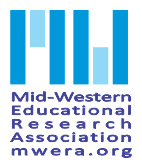Abstract
Access to appropriate technological resources in schools has become an issue, commonly labeled the “digital divide.” While the debate ensues in regards to an explicit definition for this phenomenon, research overwhelmingly demonstrates that students of marginalized populations remain on the lower end of access to and innovative use of current digital technologies. Accordingly, advocates of social justice point to the disparities of resources and quality learning opportunities experienced by students in poverty, including their exposure to dynamic technology integration in teaching and learning. This study narrates a five-year struggle to impact the digital divide on an urban middle school campus.
Recommended Citation
Banister, Savilla and Fischer, John
(2010)
"Overcoming the Digital Divide: The Story of an Urban Middle School,"
Mid-Western Educational Researcher: Vol. 23:
Iss.
2, Article 2.
Available at:
https://scholarworks.bgsu.edu/mwer/vol23/iss2/2


